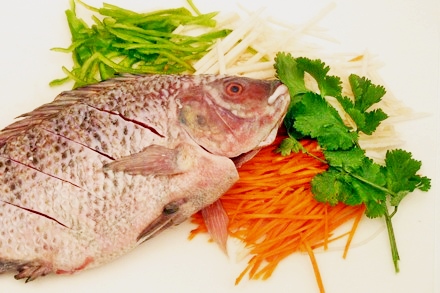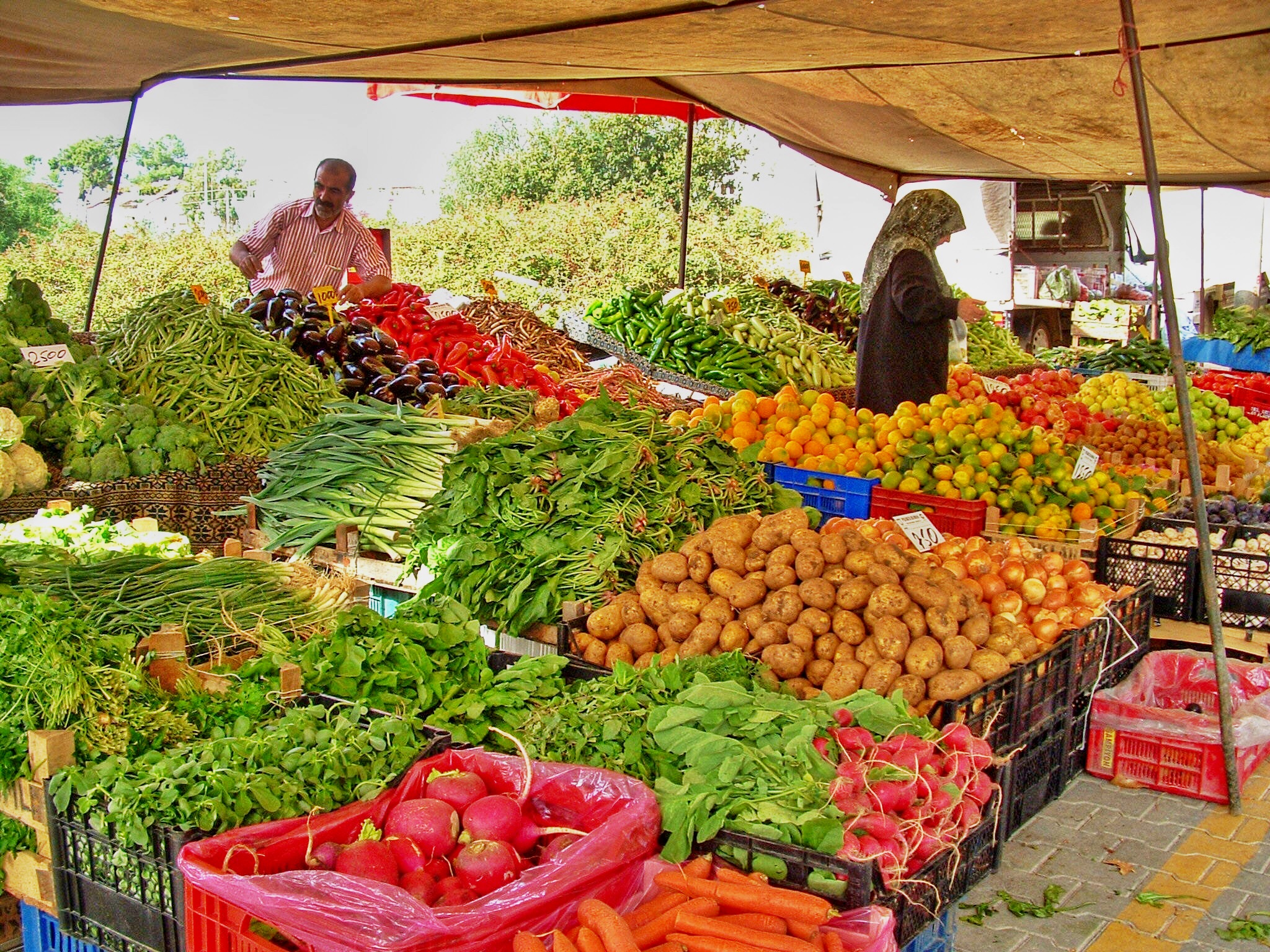Introduction
Grocery shopping is one of the biggest parts of most people’s budgets. Even sticking to the basics seems to be a huge expense when it comes to food shopping. Food prices may keep rising but perhaps your food budget has stayed the same. So how do you eat a nutritious diet while keeping your grocery bill low? The good news is that cheap foods are not necessarily unhealthy.
It is not expensive to do your healthy grocery shopping on a budget. Commit to buying healthy foods in place of packaged junk.
- Plan your grocery trip and your menu.
- Shop from a list.
- Make a few adjustments to your purchasing.
- Keep an eye out for special offers.
…and you will be surprised how much you can safe.

Picture 1 : Grocery shopping
(source : paleoaholic.com)
Planning Your Grocery Trip
How to begin :
1) Decide ahead of time what you plan to eat for the week.
- Remember to use the Malaysian Food Pyramid Guide to ensure your meals are well-balanced.
- Plan economical mealsthat are nutritious and filling using foods such as rice, cereals, noodles, potatoes and even local tubers such as yam and sweet potato.
- Fish and poultry are generally less expensive meats than beef.
- Dried beans or legumes, tofu, tempeh and eggs are low-cost, nutritious options, particularly if you are cutting back on meat.
- Use seasonal produce and items that are on sale and shop at wholesalers, pasar tani and wet market, if possible.
2) Make a list of the ingredients.
- Check which ones you already have and which ones you will need to buy.
- This is also a good time for you to clean your refrigerator and cupboards and use up old stock of foods. Watch out for the expiry dates.
3) Omit less-healthy snacks from your list.
- Examples are packaged cookies, cakes and chips.
- Many packaged snacks and baked goods contain hydrogenated oils, and are high in sodium and sugar.
- If you really want cookies and cakes, it is actually cheaper to make your own; plus, you will have control over the amount of fat and sugar you use.
4) Check to see whether any of the item you need are on sale or have special offers at the local supermarket.
- Check for coupons, or discounts offered.
- Check newspaper advertisements, supermarket flyers and online grocery coupons for potential savings.
- Put the coupons you want to use in your purse.
5) Get to know your local grocers to identify which can offer a better price.
- Remember to check out if there are wholesalers in your neighbourhood. They usually offer cheaper price and the foods are fresher.
What To Buy ?
1. Red Meat
- Lean and extra-lean varieties such as tenderloin tend to be more expensive than fattier cuts. However, you do not need to consume a lot of meat to fulfill your protein requirement.
- Remember, red meat is very rich in protein and the Malaysian Dietary Guidelines recommend only 1 serving of meat for adults in addition to other sources of protein like poultry, eggs and legumes.
- 1 serving of beef is only about 2 pieces of meat of less than 100g.
- It is common to over consume meat dishes but you can stretch the meat dish by adding more vegetables, potatoes or even dhal.
- You can also choose cheaper cuts of meats. Although they tend to be tough, they cook beautifully in the slow cooker, so you can still enjoy relatively inexpensive, tender meat.

Figure 1 : Malaysian Food Pyramid
2. Poultry
- Boneless, skinless chicken pieces can be very expensive. It may be cheaper to buy whole chicken and clean the chicken yourself.
- Also buy fresh chicken rather than pre-seasoned or marinated chicken. It is cheaper and you can choose your own seasonings or marination which are healthier with less salt, preservatives, artificial flavourings etc.
3. Fish
- Some fish can be expensive, so see if there are good deals on fresh varieties when shopping in the wet market.
- If fresh fish happens to be on sale, buy some for today and some for your freezer.
- Try new recipes using fresh water fish. Fresh water fish such as tilapia and cat fish (keli) is relatively cheap and as nutritious.

Picture 2 : Fresh tilapia
(source : redcook.net)
4. Legumes
- Legumes are cheap and are wonderful alternative sources of protein.
- Dried beans such as dhal, lentils and bean products such as tofu, fucuk, and tempe make delicious dishes.
- Try going vegetarian once a week !
5. Milk
- If money is tight, then there is no need for you to pay extra for fresh milk. Buy what you can afford for drinking, and consider buying milk powder for drinks and cooking as they are comparatively cheaper than liquid milk
These days, a large portion of the food bill is the milk for children. Remember, children above one year old do not need any special formula as they are already eating a normal diet.
They need about 2-3 glasses of milk a day which can come from any brand of normal full cream milk powder. You can be assured that they are healthy as long as you ensure that they eat a well-balanced diet.
You can even safe if your child is still breastfeeding. Do you know that breast milk provides almost half of the vitamin A and 95% of vitamin C requirements of children at 2 years of age? It also provides about 40% of energy and protein requirement plus the benefits of antibodies.
6. Fruit and Vegetables
- Fresh produce can be expensive, but if you are cutting back on processed snacks and non-essential packaged foods, you can afford more fresh fruit and vegetables.
- Snacking on fruits rather than salty fat-filled crackers and chips is so much better for you.
- Buy in season and check out farmers markets (pasar tani) or wholesalers for some good deals on fresh local produce.
- Consider growing your ownvegetables and fruits. Growing some sawi, tomatoes, chilly and a few herbs here and there can make a difference.

Picture 3 : Fruit and vegetables at market
(source : ms.wikipedia.org)
7. Beverages
- Do you really need bottled water? In Malaysia, boiled tap water is safe as drinking water so it is not necessary for you to buy bottled drinking water.
- Skip the carbonated and sugary juice drinks. Most of the commercial juice drinks are loaded with sugar and preservatives.
- Spend your money on nutritious drinks like milk and make your fruit juices and soya milk. Do you know it is 4 times cheaper to make your own soya milk !

Picture 4 : Blended fruit juice
(source : www.malaysiaportals.com)
Conclusion
The key to shopping for groceries on a low budget is selecting food that is nutritious, filling and tasty, yet inexpensive.
As the price of food rises, it becomes more challenging to do this. With good planning and developing strategies to cut costs, you can reduce your food bills. Commit to stay within your food budget and to make healthy food choices for yourself and your family.
References
- Malaysian Dietary Guidelines. Ministry of Health 2010.
- Breastfeeding counseling : A training course. Geneva, World Health Organisation, 1993 (WHO/CDR/93.6)
| Last reviewed | : | 05 January 2015 |
| Writer | : | Pn. Fatimah binti Salim |







